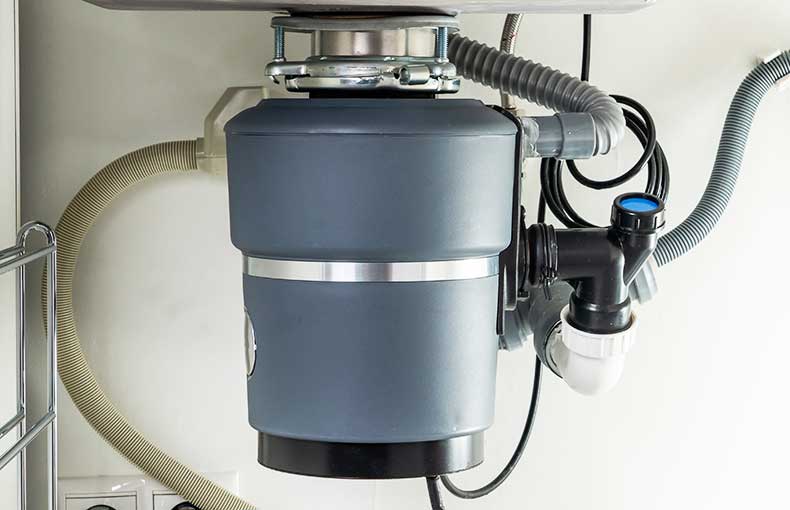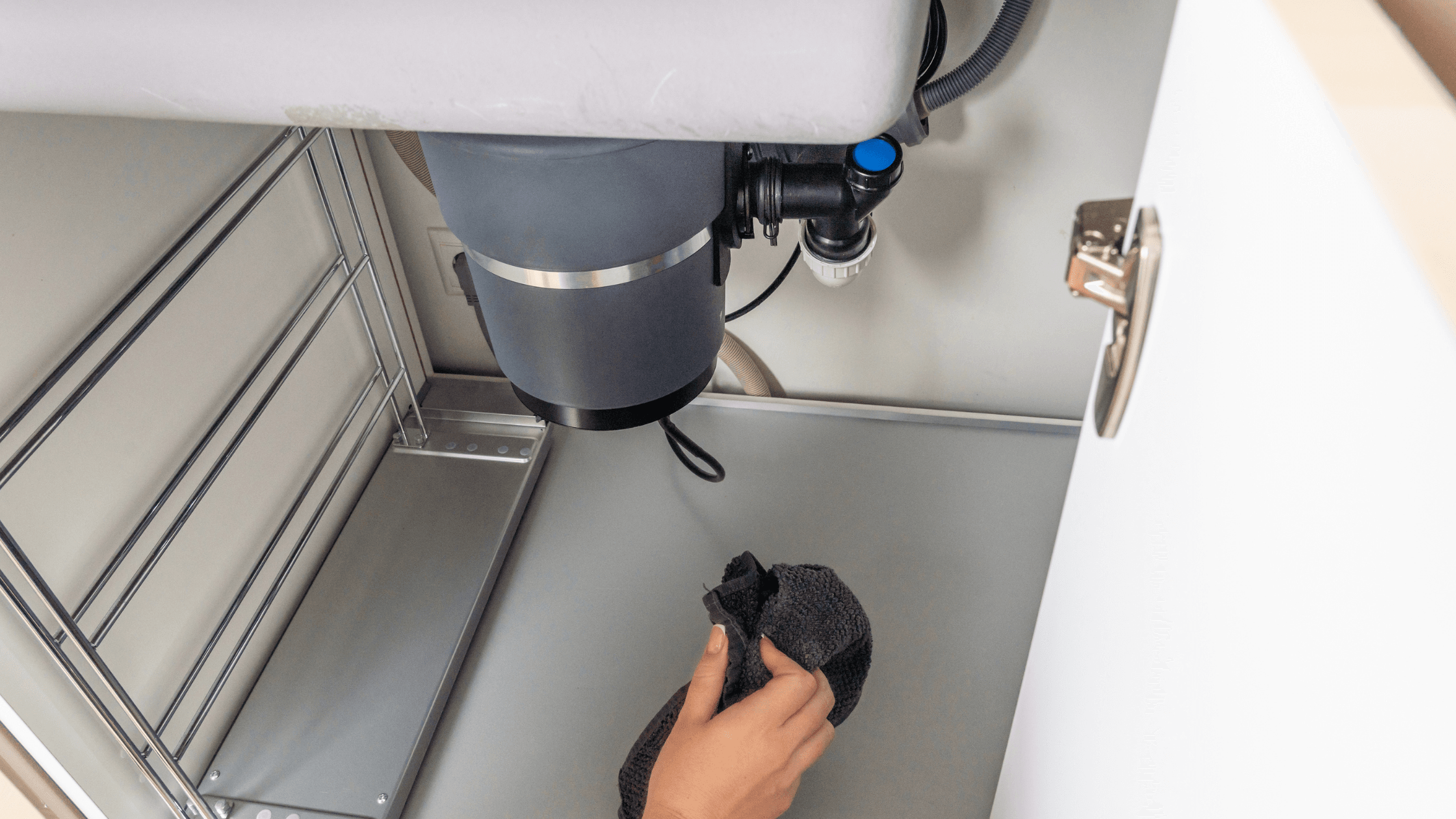Trusted Ways to Fix a Leaking Waste Disposal Unit
Trusted Ways to Fix a Leaking Waste Disposal Unit
Blog Article
We've come across this article about Why Is My Garbage Disposal Leaking From the Bottom? down the page on the web and concluded it made good sense to relate it with you on this page.

Garbage disposals are important kitchen area appliances that help in throwing away food waste successfully. Nevertheless, a dripping garbage disposal can be a discouraging and messy problem to take care of. Fortunately, many leakages can be fixed quickly with a few easy actions. In this short article, we will certainly talk about exactly how to deal with a dripping waste disposal unit efficiently.
Introduction
Garbage disposals are mounted under kitchen sinks and are created to shred food waste into smaller pieces, permitting it to travel through the plumbing system easily. While these tools are generally reliable, leaks can take place in time due to deterioration, loose links, or damages to the system.
Typical Causes of Leaks in Waste Disposals
Worn Seals and Gaskets
Seals and gaskets play a critical duty in preventing water from dripping out of the garbage disposal. Gradually, these components can weaken, causing leakages around the disposal device.
Loose Links
The connections in between the garbage disposal and the pipes system can come to be loose over time, creating water to leakage out throughout operation.
Cracks or Openings in the Disposal System
Physical damage to the garbage disposal, such as splits or holes in the real estate, can additionally cause leakages.
Determining the Resource of the Leakage
Prior to trying to take care of a dripping waste disposal unit, it is vital to identify the resource of the leak. This can typically be done with visual evaluation or by conducting straightforward tests.
Visual Examination
Examine the waste disposal unit unit meticulously for any kind of indicators of water leakage. Pay attention to areas around seals, gaskets, and connection points.
Evaluating for Leakages
One means to check for leaks is by running water through the disposal unit and looking for any noticeable indicators of leak.
Tools and Products Needed for Taking Care Of a Dripping Garbage Disposal
Prior to starting the repair work procedure, gather the necessary devices and products, including a screwdriver, adjustable wrench, plumber's putty, substitute seals or gaskets, and epoxy or patching product for fixing splits or holes.
Step-by-Step Guide to Dealing With a Leaking Garbage Disposal
Switch off the Power
Before trying any fixings, make certain that the power to the waste disposal unit device is switched off to prevent the danger of electrical shock.
Locate the Leakage
Recognize the precise location of the leakage and identify the cause.
Tighten Links
Utilize a wrench to tighten up any loosened connections in between the disposal unit and the plumbing system.
Change Seals or Gaskets
If the leakage is due to used seals or gaskets, remove the old parts and replace them with new ones.
Patching Fractures or Openings
For cracks or holes in the disposal system, usage epoxy or a suitable patching product to secure the damaged area.
Examining the Waste Disposal Unit After Repair Work
As soon as the repair service is total, check the garbage disposal by running water through it to make sure that the leak has been resolved.
Preventive Upkeep Tips to Stay Clear Of Future Leakages
To prevent future leakages, it is vital to perform regular upkeep on your garbage disposal. This consists of keeping it clean, avoiding placing non-food items or hard things down the disposal, and periodically checking for leaks or various other concerns.
Final thought
Finally, fixing a dripping garbage disposal is a relatively simple process that can be completed with fundamental devices and materials. By following the actions described in this article and practicing preventative upkeep, you can keep your waste disposal unit in good working problem and prevent expensive repair services in the future.
HERE’S HOW TO FIX YOUR GARBAGE DISPOSAL
WHAT TO DO IF SOMETHING IS STUCK IN YOUR GARBAGE DISPOSAL
If the impeller won’t turn, there’s probably something stuck in the disposal. It could be a steak bone or peach pit, although plumbers report pulling all sorts of inappropriate objects out of disposals, such as bottle caps or aluminum foil. Make sure power to the disposal is off, and look inside to see if you can see the source of the jam.
Never stick your fingers in a disposal. Pull out anything you see with tongs or pliers.
If the disposal still won’t work, it may be time to call a plumber or consider buying a new disposal. GEM Plumbing & Heating is here for all of your garbage disposal needs.
WHAT TO DO IF YOUR GARBAGE DISPOSAL DRAIN IS CLOGGED
Take everything out from underneath your sink and put a bucket or other container under your disposal to catch any water that drains out. Disconnect your disposal from the power supply. If it’s plugged into a wall outlet, unplug it. If it’s hardwired into an electrical box, go to the electrical panel and turn off the breaker for the disposal. Pour ¼ cup of baking soda into the drain, followed by ½ cup of white vinegar. Give the solution a few minutes to fizz and do its work. Look into the disposal with a flashlight to see if you can see an object that might be causing the clog. If you see it, remove it using tongs or pliers. MORE TIPS ON DEALING WITH A CLOGGED GARBAGE DISPOSAL
Never use drain cleaner in a garbage disposal. It can damage the plastic parts inside the disposal. You can also be splashed with the caustic liquid while working to clear the clog. Beware! Never stick your fingers into a garbage disposal. Trust us — not a good idea. In many instances, your dishwasher drains through your garbage disposal. This allows the disposal to grind any large food particles that may be drained out of your dishwasher. There are some jurisdictions, however, where the plumbing code prohibits such a connection. WHAT TO DO WHEN YOUR DISHWASHER DRAINS THROUGH THE DISPOSAL
Run some water in the sink so your plunger has at least a ½-inch of water to create a seal and plunge vigorously up and down several times. You may need to repeat this several times. Run hot water down the drain to clear any residue that remains.

We were shown that write-up on Why Is through a good friend on our other web property. Sharing is good. You never know, you might be helping someone out. I appreciate reading our article about How to fix a pretty consistent leak from my garbage disposal.
Browse Our Site Report this page